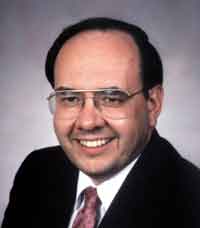From the Boston Globe. To read the original, click here.
Religion reporting is losing its prominence in American newspapers
By Michael Paulson, Globe Staff
MINNEAPOLIS - I spent the last few days here at the 60th annual convention of the Religion Newswriters Association, which is the national organization that represents the dwindling band of us who cover religion in the media. Attendance is off this year, in part because newsroom travel budgets are down, but also because the religion beat itself is suffering a serious reversal of fortune.
When I first started covering religion for the Globe nearly a decade ago, the beat was almost trendy; newspapers were beefing up their coverage considerably, religion sections were fat, and a few newspapers, like the Los Angeles Times, had four or more religion writers.
No more. There have been reductions in the number of reporters who write about religion full time at all of the nation’s biggest newspapers, and the religion news beat has disappeared from multiple midsize and smaller papers. The surviving newspaper religion sections are getting smaller.
Debra Mason, executive director of the Religion Newswriters Association, told me she does not believe that the religion beat is being targeted, but that all specialty beats at newspapers, including the environment, health, and education, are suffering as newspapers, with shrinking budgets, allocate an increasing fraction of their diminished newsroom staffs to general assignment jobs.
What exactly this means for the future of religion coverage in the United States is unclear. The beat is not likely to disappear entirely from the mainstream media, and there is still a lot of great work being done.
There is a huge amount of writing about religion in new media - blogs and other online publications - some of which break news, and some of which comment on news broken by others. But much of the online work is focused on individual faith groups and is written from a particular ideological or theological perspective, which differentiates it from traditional religion journalism. At the most recent denominational conventions I have attended, bloggers and reporters for religious publications have easily outnumbered reporters for secular publications.
A final, and related, trend that I see is an increase in religious denominations reporting about themselves. I participated in a conference at Utah State University earlier this year and attended a presentation about how, in light of the decline of the religion beat, the Church of Jesus Christ of Latter-day Saints is more aggressively telling its own story, through blogging and Facebook and Twitter. It now seems clear that the Catholic bishops’ conference is doing the same thing, and the Episcopal Church appears to be moving in a similar direction.
Of course, lots of organizations have tried over time to circumvent the media and tell their stories directly to the public - what’s new now is that, in some cases, this is being precipitated not by an overarching critique of the quality of coverage, but by the paucity of coverage. Obviously, this trend raises all kinds of questions for those of us who believe that the critical distance journalists seek to maintain from their subjects makes an important difference in storytelling. Apparently, some religious leaders are worried, too: the Rev. Peg Chemberlin, president-elect of the National Council of Churches, said at the conference, “It’s a concern for many of us in the faith community . . . as religion writers are seeming to slide away from the landscape.’’
At a panel on immigration and faith at the convention Thursday, Luis Lugo, the director of the Pew Forum on Religion & Public Life, made a few interesting observations:
■ Immigration is leading to an increase in the number of Buddhists, Hindus, and Muslims in the United States, but a large majority of new immigrants are Christian. This stands in contrast to the situation in Europe, where a much higher percentage of immigrants are non-Christian.
■ Although Protestants outnumber Catholics in the United States, new immigrants are overwhelmingly Catholic, and as a result, “immigration is tilting the balance within American Christianity in favor of Catholicism.’’ Also, Lugo said, “We’re very close to becoming a minority Protestant country.’’
■ Many of the new immigrants are from Latin America, Africa, and Asia. “What we are seeing is not the de-Christianization of America, but the de-Europeanization of American Christianity,’’ he said. One effect of this, he said, is a rise in Pentecostal and charismatic worship styles in US churches, because those more expressive forms of worship are often preferred by immigrants from the Global South.
■ Nearly a quarter of all Catholics in the United States are foreign born - the highest percentage among any of the nation’s largest faith groups. “To know what the country will be like in three decades, look at the Catholic church,’’ he said.
■ The Muslim population in the United States is more diverse, in terms of national origin, than the Muslim population in any other country. No more than 8 percent of American Muslims are from any one country. This, again, contrasts with the situation in Europe, where, for example, many German Muslims are from Turkey, many Spanish Muslims are from Morocco, and many French Muslims are from Algeria.
Thursday, September 17, 2009
Subscribe to:
Post Comments (Atom)

No comments:
Post a Comment